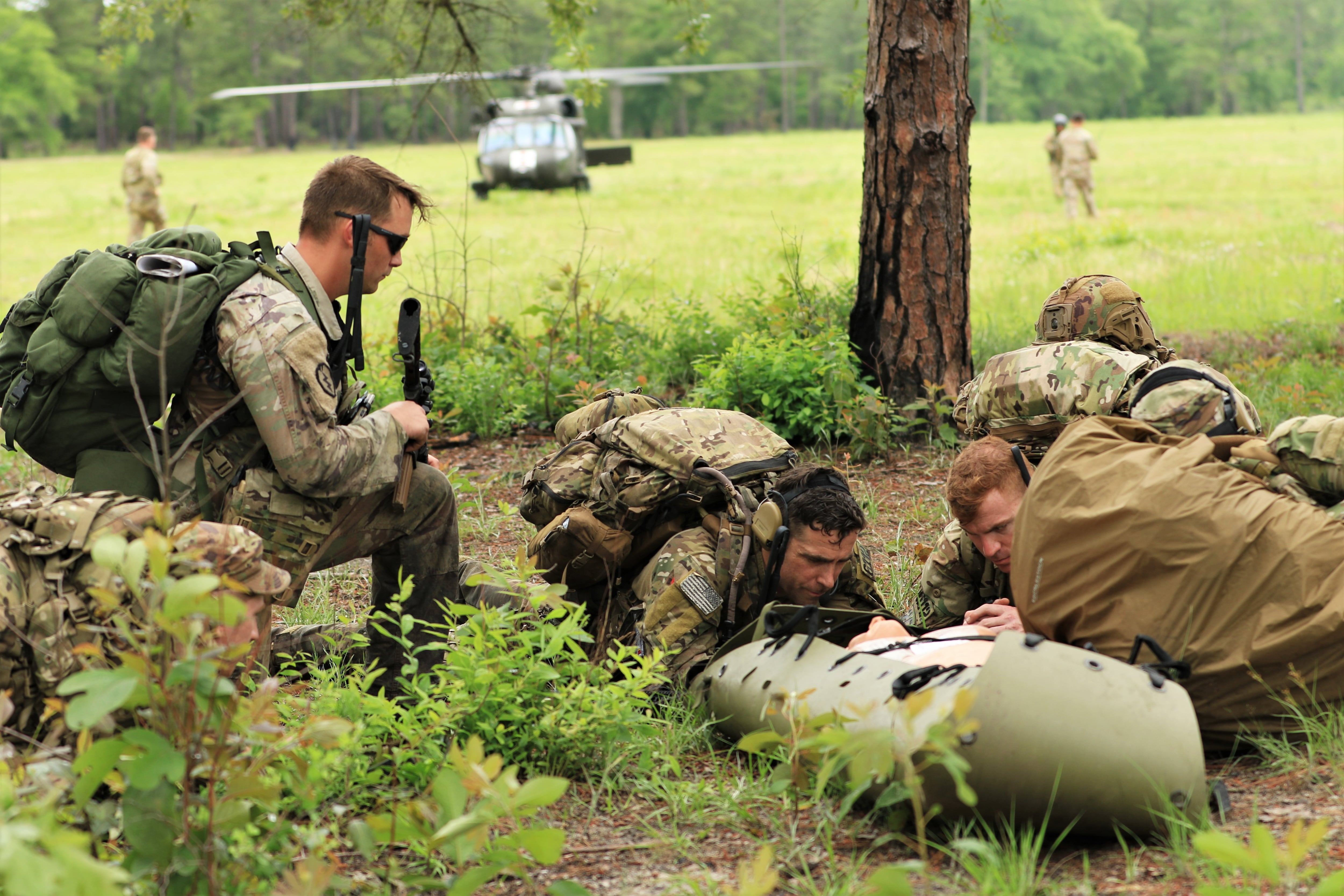MIRAMAR, Florida — Staff Sgt. Derek Wooderson pushes his foreign counterpart to understand that sharing information among the team is critical to success.
Wooderson lays out how U.S. soldiers make sure everyone in the team, especially the staff, knows what others are doing.
But his intelligence counterpart in the fictional Latin American nation of “Ziwa” isn’t having it.
The soldier who’s role playing as the Ziwa counterpart for this 1st Security Force Assistance Brigade pre-deployment exercise doesn’t want to share the information with others.
Wooderson explains that even though the staffer they’re talking about works logistics, he needs to know the operations and intel information. For example, the weather report. If it rains, it will have an effect on delivering supplies. But the Ziwa role player still isn’t buying it. He says that’s not how he works. Wooderson suspects something else, but he has to approach the issue with tact.
RELATED
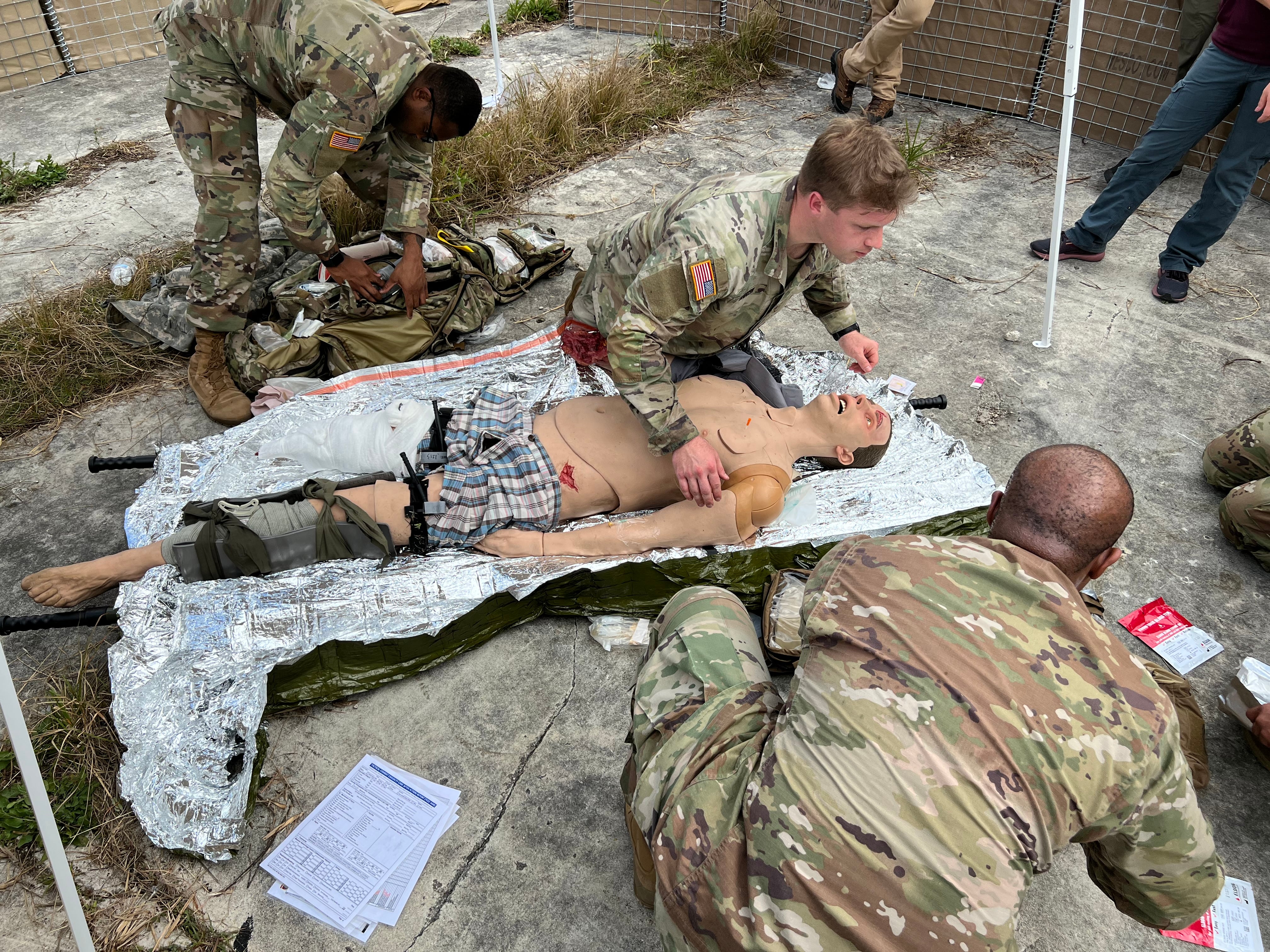
Soldiers in the Army’s SFABs have to be masters at building rapport with foreign partners — their first, and maybe most important duty. Rapport with new partners is becoming more important as Afghanistan-focused, brigade-sized deployments shifted to four to 12-soldier teams, run by a captain, alone in the hinterlands of the world.
SFAB teams are asked to train partners on better marksmanship or logistics, while also sending “strategic signals” to adversaries such as Russia and China that American forces are there, helping their neighbors get better, and keeping an eye on them. That means grinding it out in the mud with partner forces, meeting with foreign generals and officials, while briefing back their activities to the U.S. embassy staff and combatant commanders.
To do all that, the part diplomat, part combat-ready force, must set aside some of their own ideas and exercise a rare skill – listening.
During the Ziwa partner exercise, the U.S. staff sergeant counters, curious if his partner has security concerns with sharing information to the staff. That’s not it, at least that’s not what the partner can tell him. So Wooderson backs off, ensuring that at least the information that needs communicating gets to the right level.
“So, is your commander briefed on that information?” Wooderson asked.
“Yes, absolutely. ... He is informed. The staff is informed,” the Ziwa role player responded. That will have to suffice for now.
The 1st SFAB exercise Army Times observed in late January topped off a year-long pre-deployment process that saw more than a dozen advisor teams train individually and collectively on marksmanship, communication, language skills, medical, cultural and social sensitivities. The teams will be sent to at least three countries in U.S. Southern Command – Panama, Honduras and Colombia. There are possibilities that others could be added during their six-month deployment beginning this summer.
The January validation exercise saw battalion staff with the 1st SFAB working with role players to push a division-level scenario at their home station of Fort Benning, Georgia. After that, batches of the SFAB’s teams went on separate, weeklong evaluations here, at the Ronald O. Harrison National Guard Readiness Center, Miramar, Florida.

In air-conditioned classrooms and open-air tents, amid long grasses and palm trees with humming generators under sunny, blue-skies and weather in the upper 70s to low 80s, the teams ran through a series of training lanes. They tested their ability to plan operations with counterparts, react to incoming fire and medical emergencies and interact with high-level foreign partners and U.S. leadership.
Soldiers are anticipating pushback, even from their foreign partners.
Ronald Johnson, a retired Army colonel and Green Beret worked as a role player during the SFAB exercise. He remembers times on deployments early in his career when counterparts would tell him that America had lost in Vietnam so they didn’t need him teaching them how to fight an insurgency. Role players such as Johnson and 1st Sgt. Clinton Bitzer, with the Army National Guard’s 54th SFAB, are posing those same arguments to these soldiers about Afghanistan.
RELATED
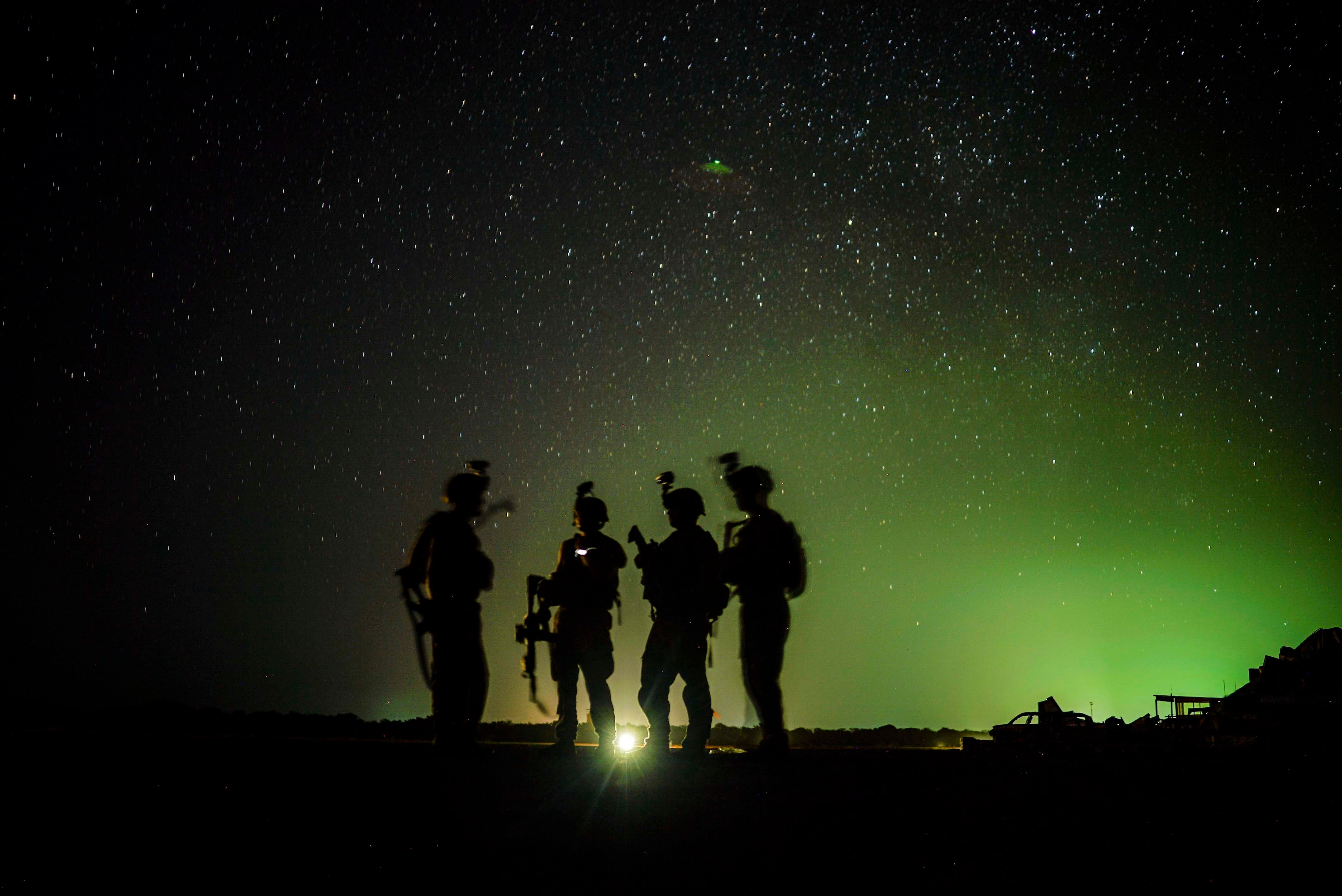
In a separate intel briefing as the SFAB soldiers and role players talk over a map, Bitzer, in character, bristles a bit.
“I haven’t worked with the [Americans] at all and I’m really concerned they are going to leave us like they did in Afghanistan,” Bitzer said.
While SFAB soldiers must acknowledge that thinking, their job is to show their partners that the U.S. military still offers the best partnership, training and advising.
“You may have to prove yourself,” Johnson tells these soon-to-deploy soldiers.
‘Morales, you’re the blood donor’
Driving down a dirt road at the Miramar facility, the advisor team’s white van is “t-boned” at an intersection. As part of the drill, 1st Sgt. Francisco Rodriguez, acts injured.
Staff Sgt. Emily Clymer, the team medical advisor, jumps into action, directing soldiers around her to help stabilize Rodriguez, get out the backboard and move him out of the van for medical transport.
As soldiers fly around, grabbing gauze, checking vitals and calling for support, bad news comes across the radio.
There are riots in this Ziwa city. They’re estimating six hours to get Rodriguez to the approved hospital.
“Morales, you’re the blood donor,” Clymer said.
The team found another hospital, not on the approved list but closer and ready to accept patients.
Once strapped to the board, they lift the injured first sergeant into the van and drive around to the “hospital.”
Maj. Katie Westerfield, the 1st SFAB brigade surgeon, plays the role of a doctor who only speaks Spanish at the fictional hospital.
Clymer relays emergency info to the doctor. The doctor wants to know how they’ll pay for treatment. Not all hospitals accept U.S. government health insurance. Sometimes soldiers need cash or a call from the embassy to get medical help.
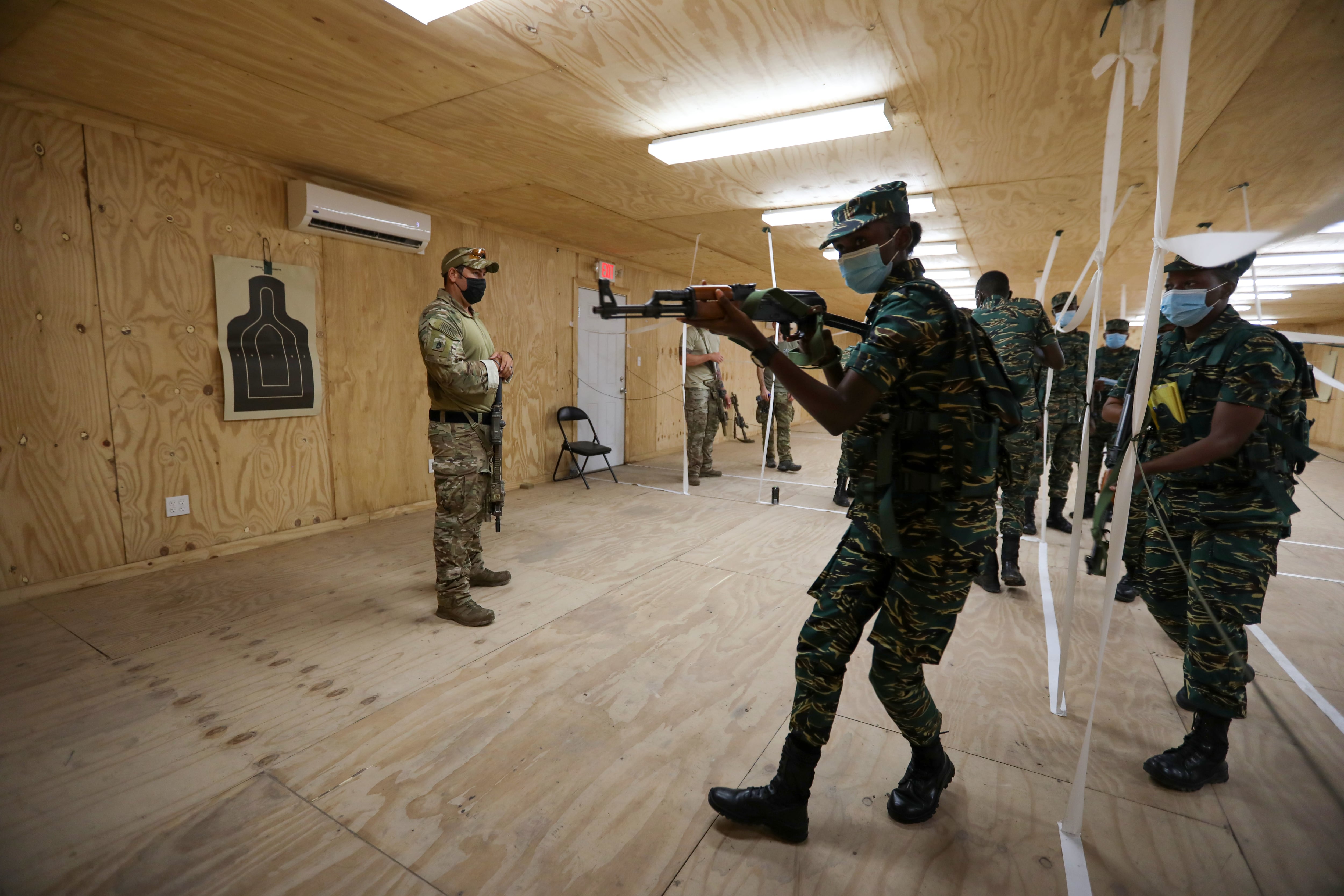
Each of the SFAB soldiers has gone through Tactical Combat Casualty Care. But Clymer has prepped her team with additional skills, sent them videos, even pestered them during downtime to sharpen their medical knowledge.
After the event, she’s impressed, they’d never practiced the backboard movement, other than watching videos, but the team executed well.
In Latin America and the Caribbean, units might have hospitals a few blocks away. But for other teams in remote locations of Africa or on islands in the Pacific, a handful of soldiers may have to keep each other alive for hours, even days.
Rapid growth, more to follow
These four to 12-soldier teams are at the center of a mission in which the U.S. wants to woo partners away from promises of gear and infrastructure funding that Russia and China dangle before less affluent nations.
Kicking off in 2017 under then-Army Chief of Staff Gen. Mark Milley, the SFABs were the professionalized, institution-driven way in which the Army was going to run security force assistance for allies and partners.
Security force assistance isn’t a new concept. It’s gone by a lot of names, including, “foreign internal defense,” and “train, advise, assist.” The United States conducted versions of this mission during the Vietnam War. Before that, British forces in World War II conducted partisan training and gave assistance to nations fighting the Germans.
But, for the U.S. Army, the SFABs were the first of its kind, “purpose-built” formation for advising, officials said.
The Army stood up its 1st SFAB and deployed the bulk of the brigade, about 800 soldiers, to Afghanistan in 2018. But even before the U.S. exit from Afghanistan in August 2021, the command signaled that full brigade deployments wouldn’t be the future.
Instead, the SFAB command wanted to push small teams of four to a dozen soldiers, headed by a captain, to various partner nations to build long term relationships – and go back to those countries year after year.
Or, as Col. Jonathan Chung, 5th SFAB commander, put it to Army Times: “How did I know that my first date with my spouse was successful?” he said. “It led to a second date.”
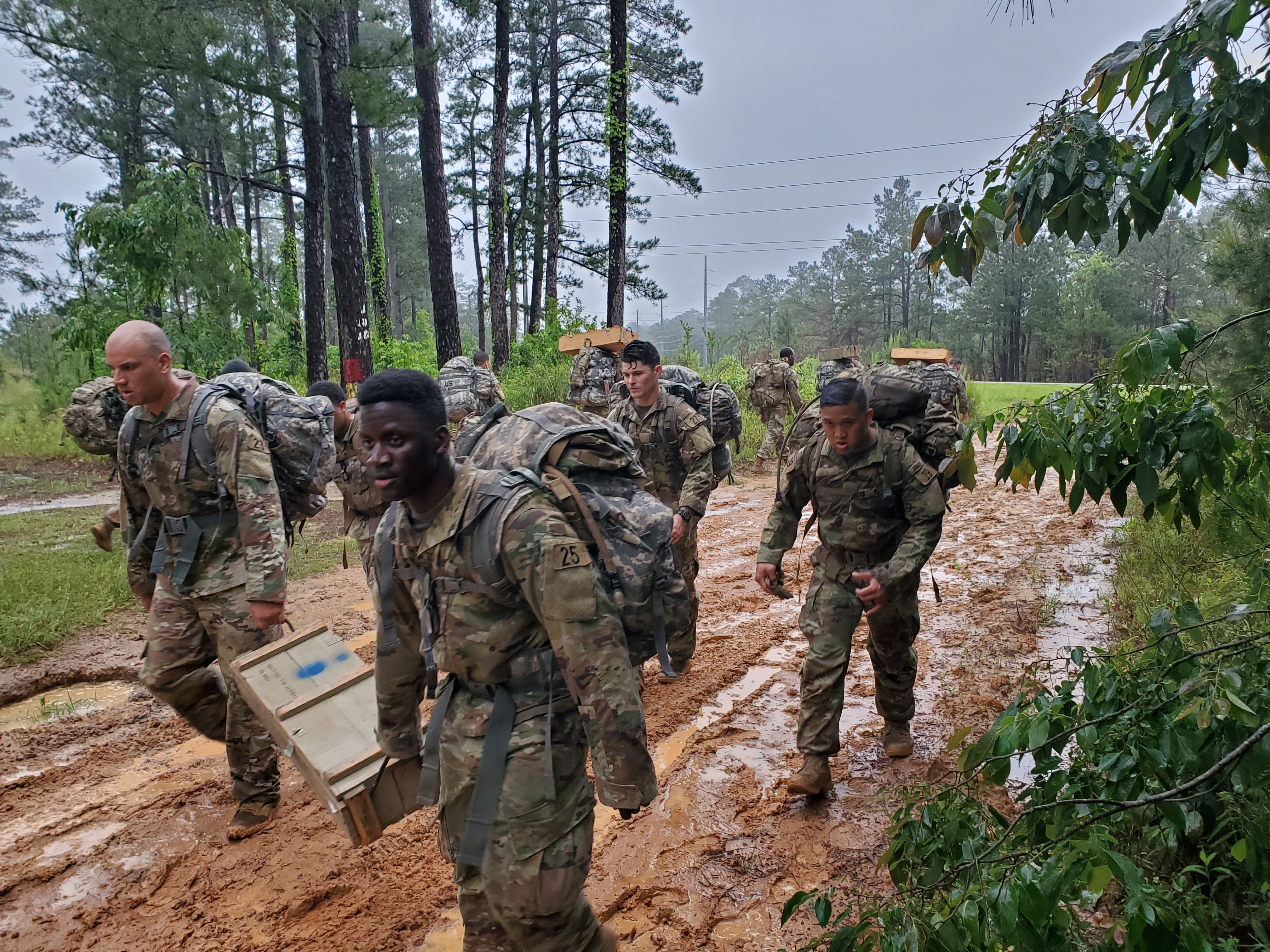
Maj. Gen. Scott Jackson, a career infantry officer, had spent time in combat zones in Iraq living alongside partners. That experience drove his own empathy for partner forces and making them better.
In May 2017 he was tasked with building the 1st SFAB and getting it to Afghanistan by early 2018. The then-Col. Jackson had four captains, two majors and three staff sergeants. What began as an 18-month timeline shrank to seven months.
“It was a pure and simple startup. We built things from the ground up,” Jackson said. “You’re not only standing up a new unit. You’re standing up a new type of unit.”
As they added soldiers, mostly volunteer senior enlisted with combat experience, Jackson noted some patterns in those who excelled.
“Every good advisor is a good soldier,” he said. “But not every soldier is a good advisor. This is a different skill set.”
The SFABs went from one brigade in one country to deploying to 24 nations in the first two years. They’ve since deployed to 54 countries, where they have a “persistent presence” in 22 and an “episodic presence” in 32, according to Security Force Assistance Command.
In 2020, the Army “regionally aligned” the SFABs:
- 1st SFAB to SOUTHCOM
- 2nd SFAB to AFRICOM
- 3rd SFAB to CENTCOM
- 4th SFAB to EUCOM
- 5th SFAB to INDOPACOM
- Army National Guard’s 54th SFAB aligned to each combatant command where needed.
The Army sent 4th SFAB to Europe this past year after having conducted multiple rotations of assigned teams to areas of Africa, Asia and Latin America. Middle East deployment work began for 3rd SFAB in 2019.

Jackson shared anecdotes of small teams having big impacts across various regions. One very small team managed to poke some big adversaries.
A four-soldier team from 5th SFAB ran the unit’s first deployment to Mongolia in 2020. They laid low for most of the deployment, keen not to cause any friction for their Mongolian hosts. They trained Mongolian soldiers in field artillery and helped build a training center.
But, when the Mongolian chief of land forces held a ceremony to honor his soldiers, he specifically asked the SFAB team to present those awards.
Sitting in the stands? Russian and Chinese delegates. That small presence, Jackson said, shows adversaries that the United States is on their periphery, even where they’re not aware.
Culture matters
Because SFAB teams are so small, they not only have to know their job at an expert level, but they also need to know how the whole team operates.
And sometimes, everyone needs a refresher.
That’s how members of Maj. Eric Cannon’s team out of 2nd Battalion, 5th SFAB, Joint Base Lewis-McChord, Washington, found themselves doing waterborne training with rubber boats ahead of their deployment to Indonesia.
The team had to conduct beach landings during Exercise Garuda Shield 2021 with their partners.
That small unit work is part of what drew Cannon to volunteer for the SFAB assignment.
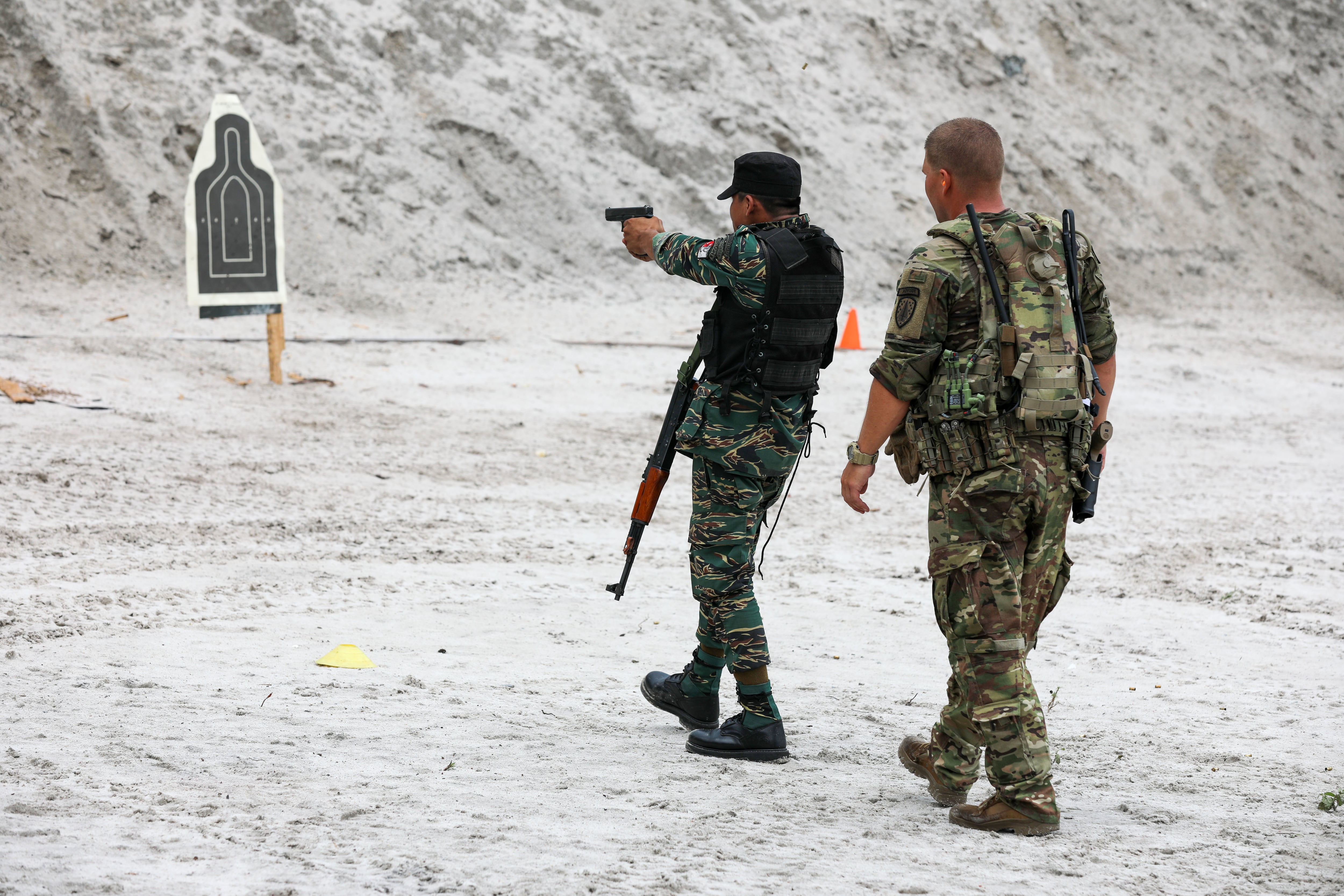
“In the small teams everybody has to be mature, professional, everybody’s an NCO or an officer. We hold everybody accountable, [and] have a lot of hard conversations,” he said. “We work together and learn a lot more.”
Sgt. 1st Class Robby Batongtong, also with 5th SFAB, was part of the SFAB teams that deployed ahead of the large-scale Exercise Balikatan in the Philippines last year. During the event, other SFAB teams came in for short trips to assist with training for things like artillery and engineer work, a kind of training “surge” to add capacity.
While both spent time almost daily with their counterparts doing military and physical training, a lot of time was spent alongside partners at cultural events, getting to know what was important to them both personally and professionally.
Cannon said their Indonesian partners loved to dance and perform karaoke in their off time. And they made sure their American teammates participated.
“They were pretty persistent about getting us on stage,” Cannon said. “We did it but we definitely need to practice.”
Tactics: the key difference
A huddle of about a dozen soldiers and role players watches the screen in near silence back at the Florida Guard training center where SFAB soldiers round out their pre-deployment training.
Blue icons shift across the screen, tracking the movements of the “Ziwa” forces alongside their U.S. counterparts in this simulated air assault.
“So here we’ve hit phase line red,” said Capt. William Michitsch, 1122 team leader, who wears a 3rd Ranger Battalion combat patch.
“Llame otro comandante,” said retired Lt. Col. Rich Bautista, a Green Beret veteran of global deployments, including Latin America, as he plays the role of “Col. Cortez.”
“Let higher know,” his translator said.
Michitsch relays the message.
A few minutes later, during the attack, “Cortez” asks if there are any wounded in the fighting and how Charlie Company is doing in the assault.
They’re still engaging.
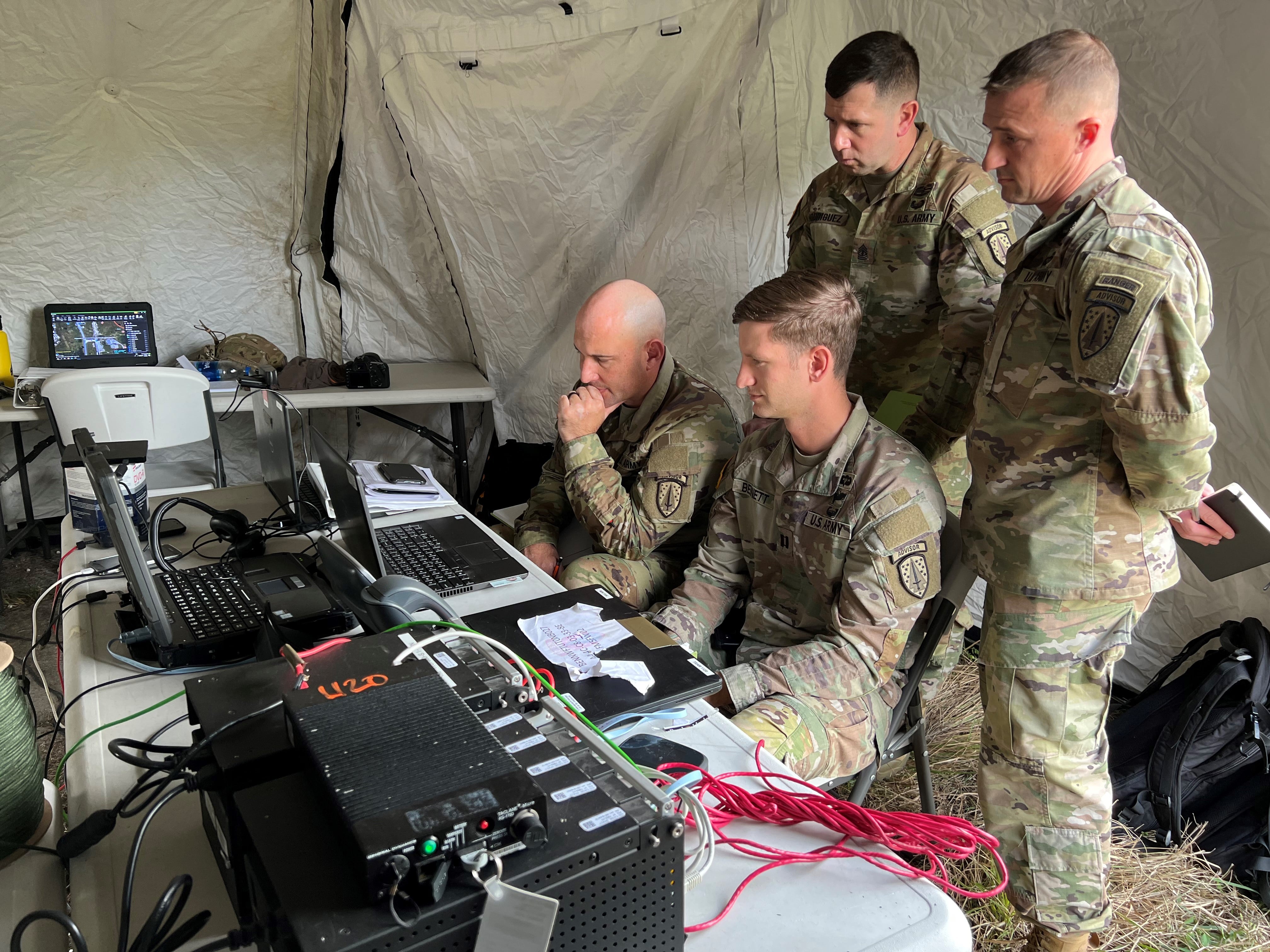
Less than 15 minutes later, the assault is complete. Three companies have taken the objectives, with the help of U.S. air support and advisors like Michitsch.
“Call the brigade and tell them that the bridges are secure and they can pass through,” Michitsch said.
“Excellente,” Bautista said.
Following the event, Bautista explained that what Michitsch did was very similar to what a young officer or NCO might face, providing support and coordinating but letting the partner commander make the calls.
That scenario was a kind of culminating event for the team, showing they could rapidly plan and execute a successful mission with their partner. But it took a year of training, weeks or months of relationship building and clear communication to make it happen.
“He’s making decisions, he walks in the room, he commands the fight, he commands the plan. Every once in awhile he looks over to me,” Michitsch said. “Usually, I concur.”
That’s where top leadership wants these small, dispersed, captain-led teams — in the middle of complex areas that have strategic importance, strengthening partners while nibbling at the edges of adversaries in their own backyards.
Todd South has written about crime, courts, government and the military for multiple publications since 2004 and was named a 2014 Pulitzer finalist for a co-written project on witness intimidation. Todd is a Marine veteran of the Iraq War.
